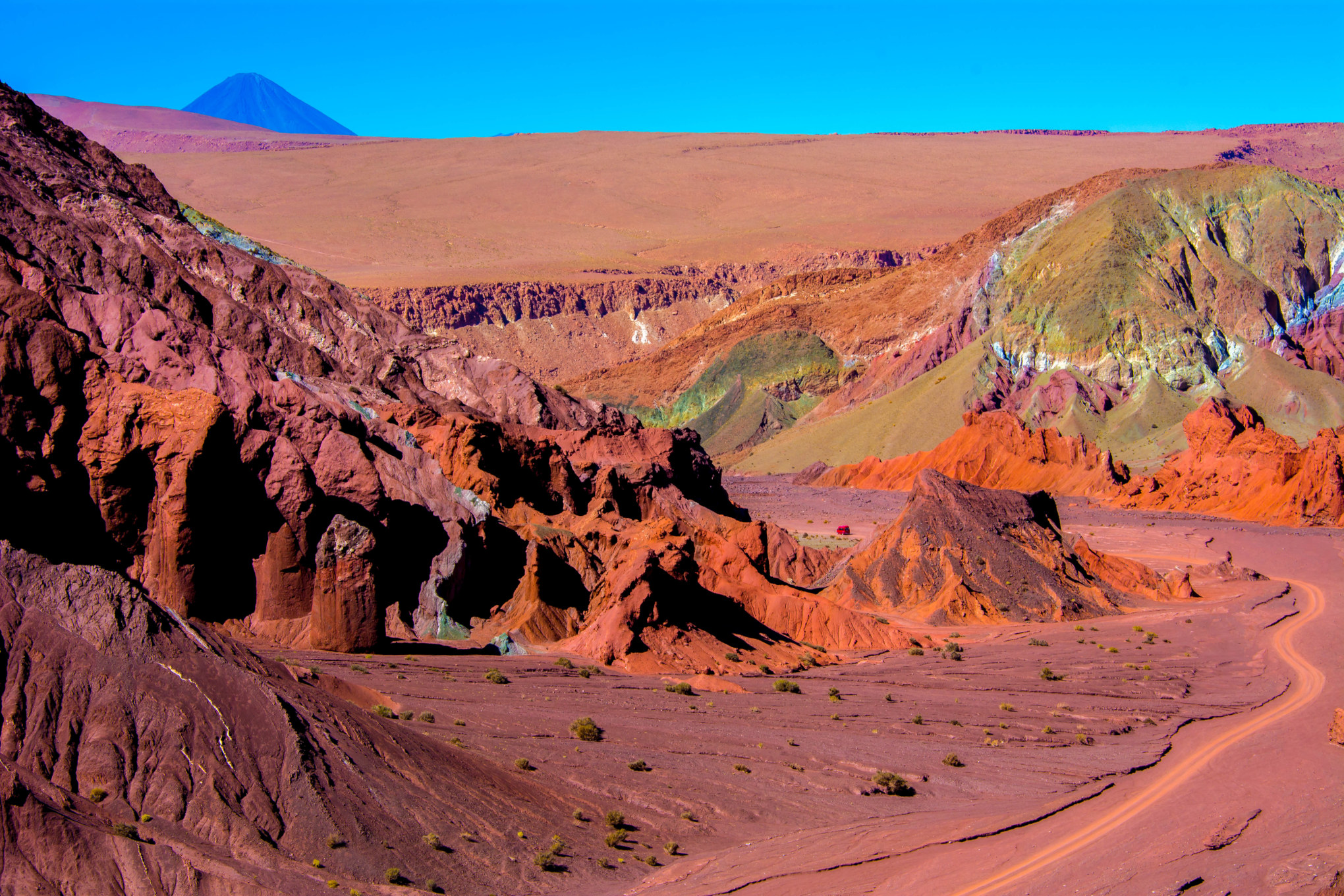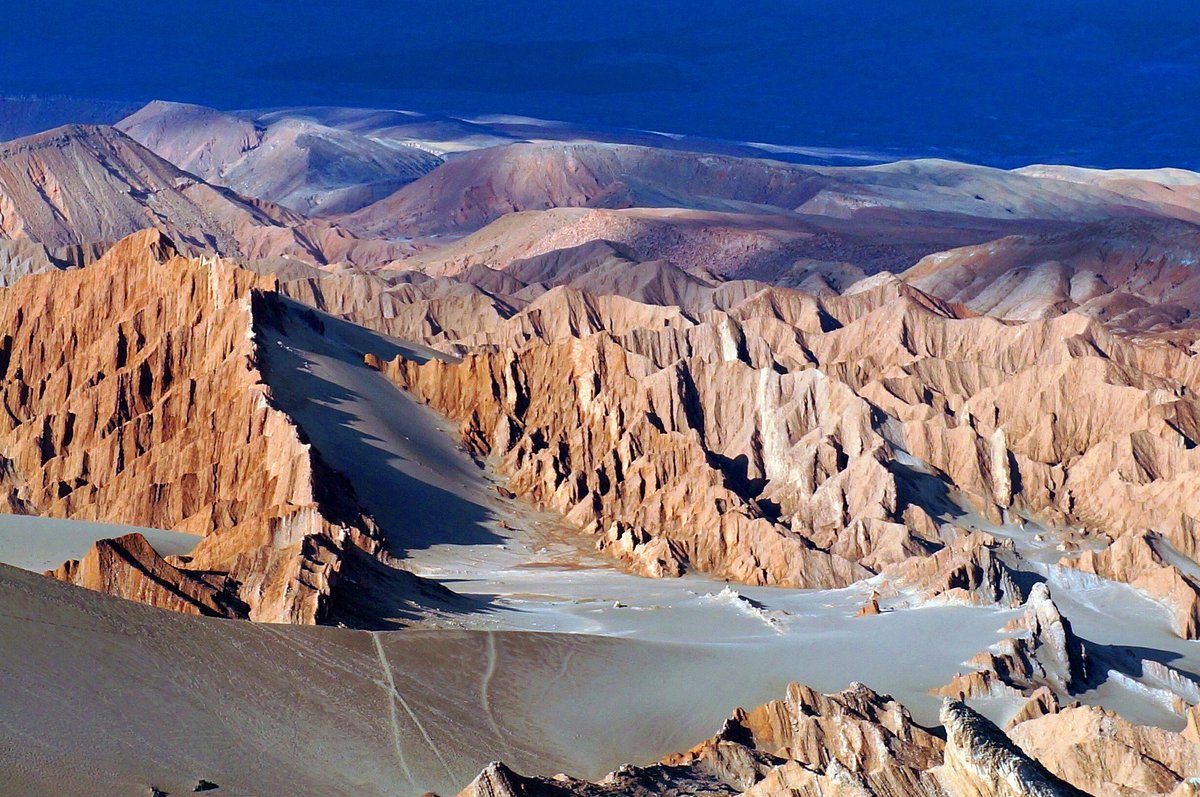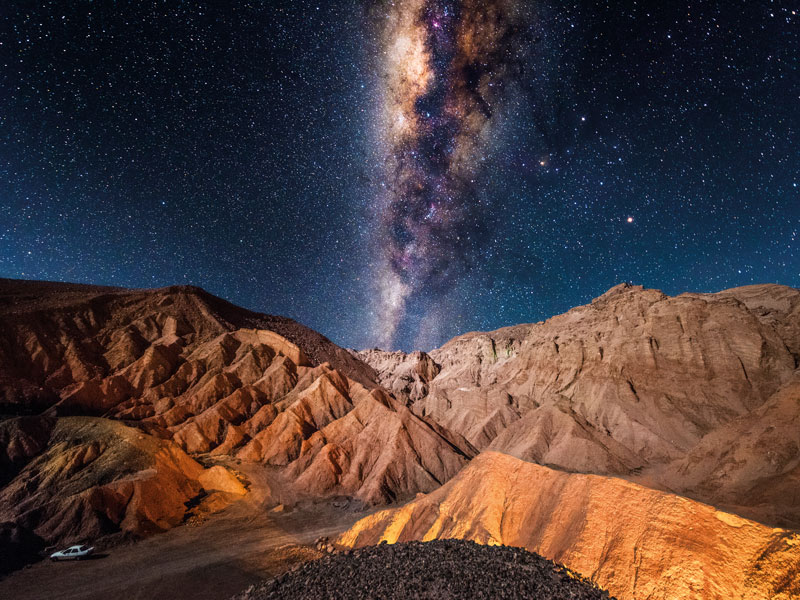The Atacama Desert in northern Chile is widely recognized as one of the most breathtaking stargazing destinations on Earth. Thanks to its high altitude, clear skies, minimal light pollution, and dry atmosphere, this vast desert offers unmatched visibility of the night sky. The region’s climate provides over 300 cloudless nights each year, making it ideal for both amateur sky watchers and professional astronomers. Many of the world’s leading observatories, such as the ALMA Observatory and Paranal Observatory, are located here, confirming its global importance for celestial observation.
This curated list of the top ten most scenic stargazing locations in the Atacama Desert highlights places where the stars shine brightest. From remote salt flats and hidden valleys to desert plateaus and high-altitude viewpoints, each spot provides a unique experience. Whether you are watching the Milky Way stretch across the sky or observing meteor showers in total silence, these destinations offer awe inspiring views that connect you with the universe.
Top Ten Most Scenic Stargazing Locations In Atacama Desert
10. Rainbow Valley

Rainbow Valley sits near San Pedro de Atacama at over 3 200 m altitude, with its vibrant red green blue and purple rock layers carved by geological forces over millions of years. At night the multicolored canyon walls frame a stunning view of the Milky Way.
With almost no light pollution and its remoteness this ravine provides a truly dramatic environment for sky watching. It’s a hidden gem for people chasing breathtaking night panoramas and astrophotography in the high desert . Visitors often arrive after sunset to let the earth tones fade into the velvet of the sky allowing constellations to blaze overhead above mineral rich slopes.
9. ALMA Plateau (Chajnantor)

The Chajnantor plateau at approximately 5 000 m hosts the ALMA array one of the world’s most powerful radio astronomy installations . While optical star tours are conducted at the support facility below the peak the plateau sets a jaw‑dropping high altitude stage to contemplate the universe. The dry air and extreme altitude yield ultra clear atmospheres ideal for stargazing. Observers at the base camp or surrounding areas can witness nearly perfect dark skies with a sweeping horizon that opens into endless star fields. Although oxygen levels are low this remote spot delivers awe inspiring panoramic views under the southern sky.
8. Paranal Observatory surrounds

Cerro Paranal at 2 635 m houses the European Southern Observatory’s Very Large Telescope complex—the largest optical‑infrared observatory in the Southern Hemisphere . While direct telescope access at night is limited to professional astronomers, the surrounding desert at sunset transforms into a serene star gazing zone.
The crisp atmosphere and minimal ambient light create extraordinary visibility. Tours around the visitor centre at the base camp include a distant view of the installations and then guided night sessions below the observatory ridge. The proximity of world‑class scientific infrastructure enhances the celestial experience outdoors under the open desert sky.
7. Valle de la Luna

Valle de la Luna or Moon Valley is a surreal moonscape carved by centuries of erosion located about 13 km from San Pedro de Atacama . By dusk it transforms under shifting tones of pink and purple and then yields to a pitch black sky where stars shine with unusual brilliance.
Visitors gather on dunes and rocky outcrops to watch constellations emerge over textured rock formations. That combination of alien terrain and immaculate dark sky makes this one of the most scenic places to stargaze in the Atacama Desert. Tours often include sunset filming followed by a guided introduction to southern hemisphere constellations under total darkness.
6. El Tatio Geysers at dawn

El Tatio geothermal field rests at around 4 320 m altitude and is famed for erupting steam at sunrise . However especially when arriving just before dawn the sky is still full of stars while vents release clouds of mist making a haunting theater of light and steam. Stargazing here blends high elevation clarity with dramatic geothermal scenery.
The cold desert air ensures crisp celestial visibility and the rising mist acts as a midground between the earth and sky. This area delivers a blend of cosmic wonder and natural spectacle perfect for memorable night sky experiences.
5. Piedras Rojas viewpoint

Located at about 4 000 m near Laguna Cejar this salt flat plateau surrounded by red rock peaks is a favourite among local astronomers . At over 13 000 ft elevation it overlooks reflective white salt surfaces that magnify starlight beneath mountain silhouettes. The site is relatively remote but accessible from San Pedro by day and quiet at night offering minimal atmosphere distortion. At night the clean air reveals hundreds of stars and the Milky Way arches bright above vivid red rock terrain. Photographers adore this dramatic contrast of dark earth tones and luminous sky.
4. San Pedro de Atacama outskirts
The town itself enforces lighting regulations that preserve dark skies and serves as the base for most astronomy tours . Numerous agencies lead guided stargazing excursions to remote locations where participants use professional telescopes to view Jupiter Saturn nebulae and the Magellanic Clouds.
Even just walking a few kilometres from town yields skies so dark they appear ink black. Expert guides share constellations stories and astronomy basics while telescopes bring galaxies into focus. The combination of accessible tour infrastructure and pristine starlight quality makes this hub beloved by night sky seekers.
3. La Silla Observatory region

La Silla Observatory sits in the southern part of the Atacama Desert at around 2 400 m and is one of ESO’s oldest major sites . It offers weekend tours that include historical insights and night sky observation. The region’s lack of light pollution combined with high elevation delivers incredible visibility.
Petroglyphs near the facility align with bright stars reflecting ancient astronomical awareness. After a lecture visitors can use onsite telescopes to view planets and star clusters. This location merges scientific history landscape heritage and stunning night sky viewing in a rich immersive experience.
2. Valle del Arcoíris (Rainbow Valley) further detail

While already listed at ten the nearby Machuca and Ayllu areas offering darker skies make the broader Rainbow Valley region robust for multiple stargazing spots . Travelers sometimes camp around small oasis communities to escape even residual lighting near the main trail. At night the silence paired with rock formations and constellations makes the scene feel vast. Reports from visitors describe the Milky Way glowing so intensely it casts shadows. Elevation remains high and humidity low making these settings ideal for capturing deep star fields in intense clarity under pure desert skies.
1. Combined Elqui Valley and San Pedro astro hubs

While technically Elqui Valley lies south of Atacama in the Coquimbo Region both it and San Pedro de Atacama function as key astronomy tourism destinations . Elqui Valley’s observatories near Vicuña such as Cerro Mamalluca Cancana and Pangue offer public telescope sessions with guides explaining cultural sky stories alongside constellations.
San Pedro’s excursions include indigenous ethno astronomy experiences and high capacity public telescope parks. Together these two hubs deliver powerful stargazing infrastructure nightly under some of the darkest skies on Earth. They provide reliable accessible tours professional commentary and gorgeous terrain that elevate the night sky into something unforgettable.








